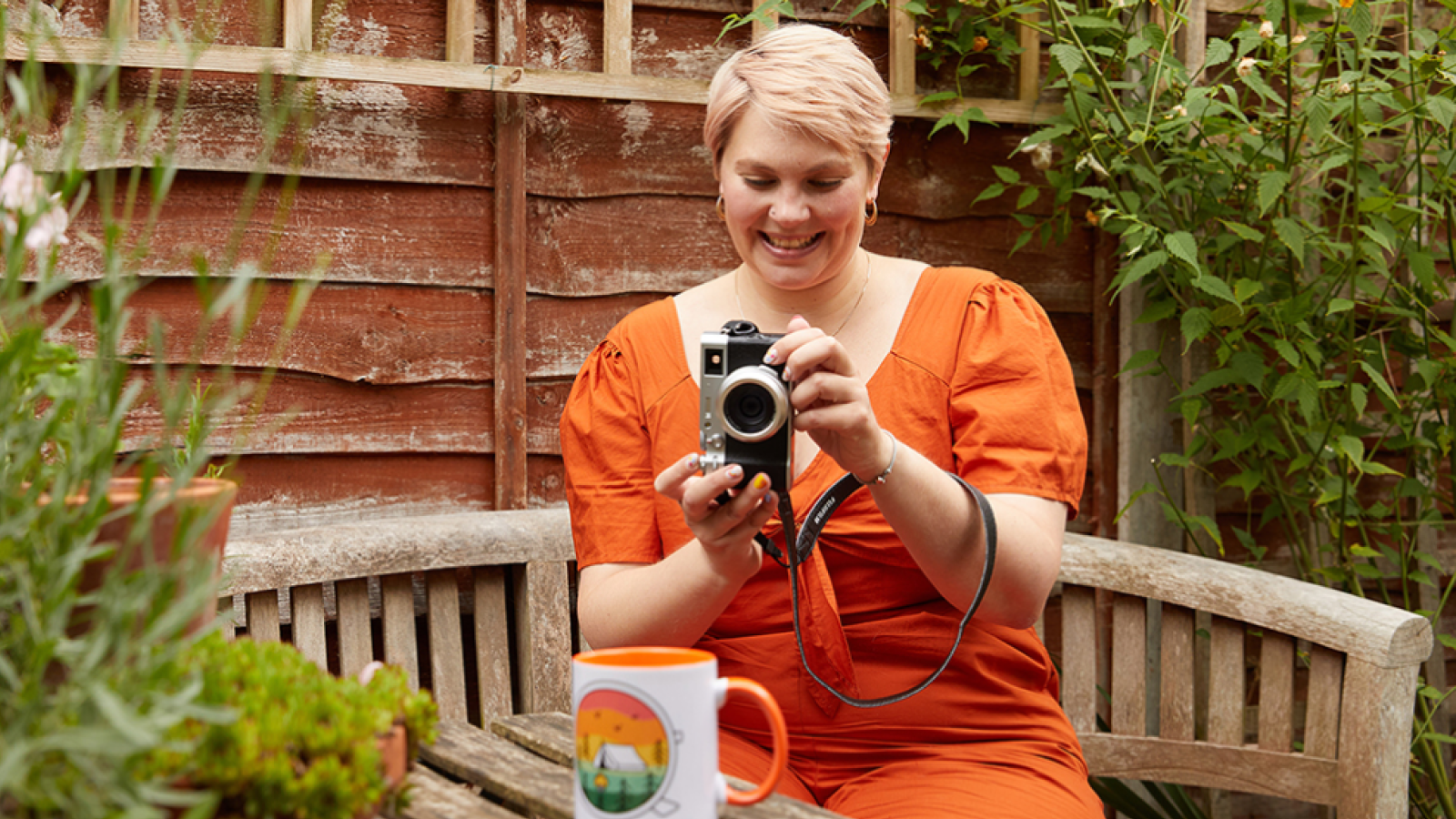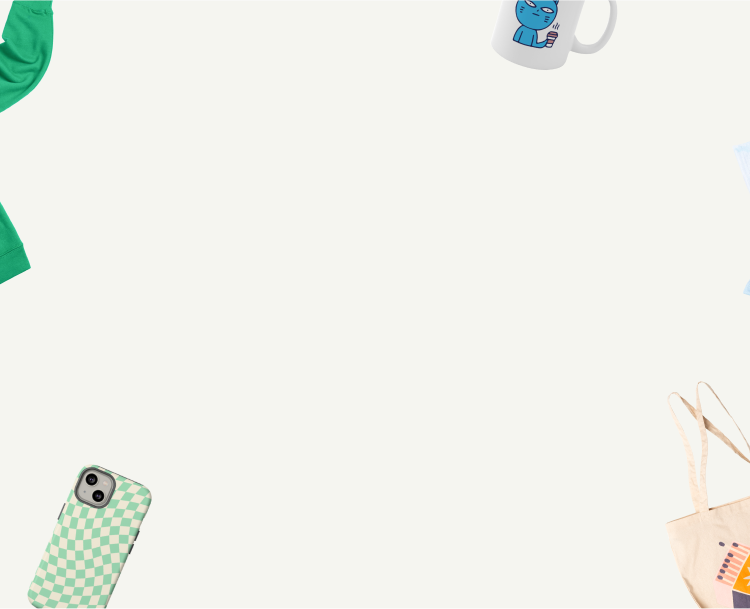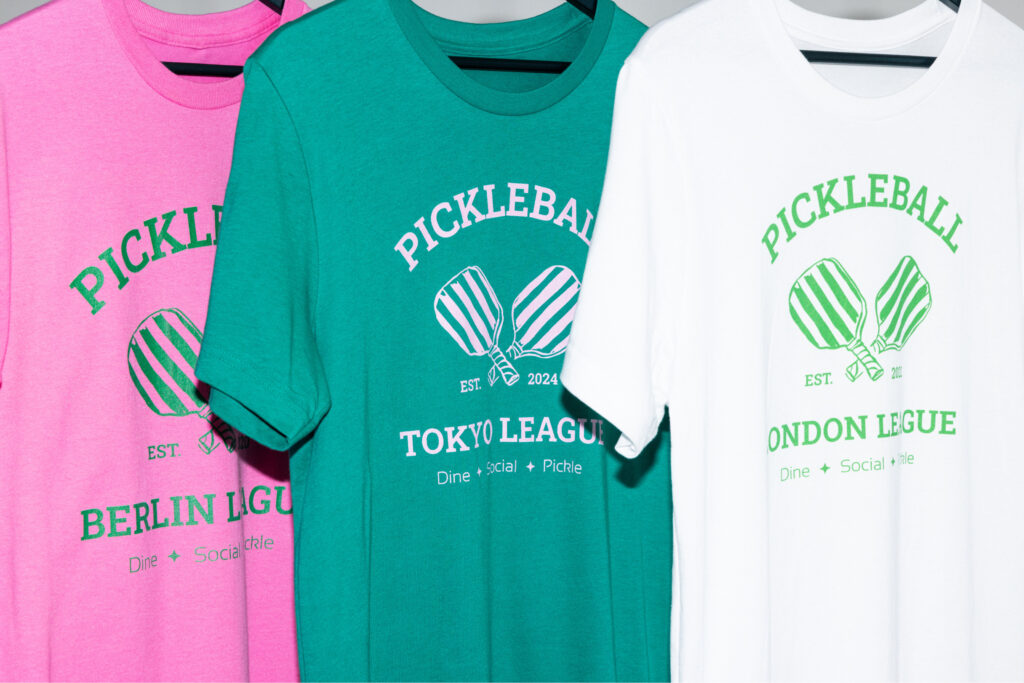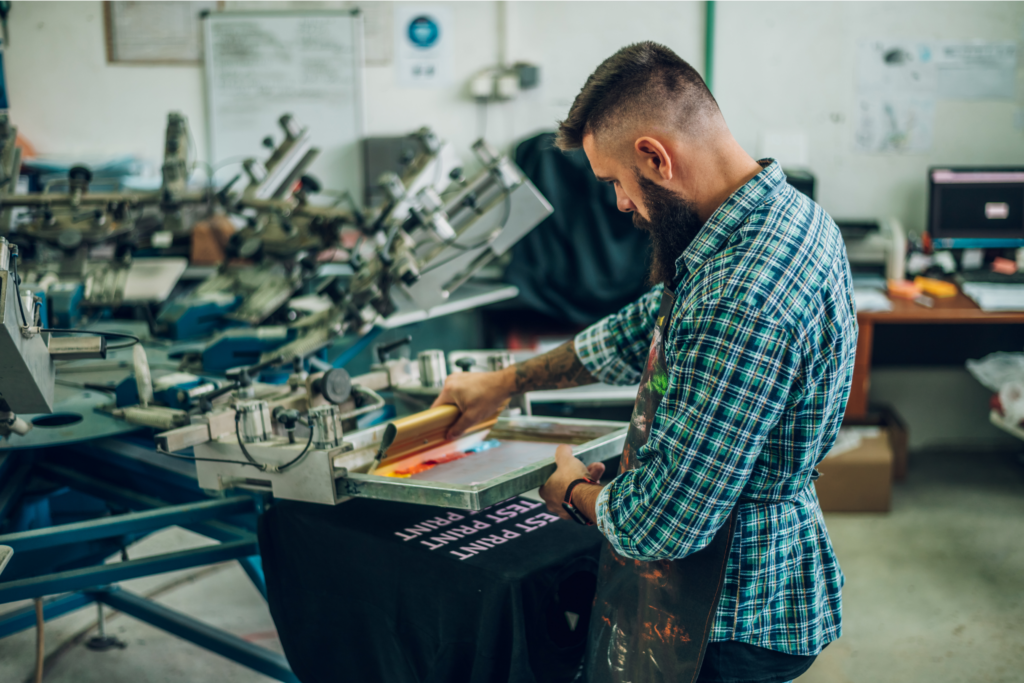Sell custom products with Printify
Ever gifted someone a mug with their name on it – or worn a t-shirt that spoke your mind? Product customization gives shoppers the power to add a personal touch to the things they buy, turning everyday items into something truly unique.
For eCommerce sellers, product customization is a low-risk, high-reward strategy that adds value without the hassle of extra inventory.
In this guide, you’ll find:
- What is product customization, and how it differs from personalization
- Why customization of products matters in eCommerce
- How to use Printify’s personalization features
- Examples of customizable products and top picks from our Product Catalog
This post may contain affiliate links, which means we may earn a commission if you make a purchase through those links. This comes at no additional cost to you.
What is product customization?
Product customization means offering products in a range of options – like colors, materials, scents, sizes, or added features – so customers can choose what suits them best.
For example, clothing or home decor brands might let shoppers pick t-shirts or throws in different colors and sizes. This approach offers a sense of personal style while still working within defined product parameters.
How customization works
Customers use product customization software or a selection menu to choose fixed options from a list of product features.
- Individual style: Consumers can select products that reflect their personal taste, which builds stronger brand loyalty.
- Greater variety: Offering customizable details raises the perceived value of your products and helps your store stand out.
- Fewer returns: When customers get exactly what they want, satisfaction goes up – and returns go down.
What is product personalization?
Personalization means tailoring an item for an individual using personal data – like the customer’s name, photo, or initials.
These products are often designed based on a customer’s input, making them truly one-of-a-kind.
Personalized experiences deepen engagement by incorporating elements unique to the buyer, ultimately increasing satisfaction and loyalty.
How personalization works
Allowing customers to add initials, names, important dates, or even photos builds a stronger emotional connection and enhances the shopping experience.
- Exclusivity: Personalized items feel special, adding perceived value and justifying a higher price.
- Sentimentality: Personalized experiences make products more meaningful and increase brand loyalty.
- Tailored choice: Giving customers control over the final product increases their likelihood of purchase.
- Higher perceived value: Personalized products are often seen as more valuable, encouraging customers to spend more.
Product customization vs product personalization
Both online product customization and personalization empower customers to make items uniquely theirs, but they work in different ways.
Here’s a quick breakdown:
| Product personalization | Product customization | |
|---|---|---|
| Definition | Adds unique elements using customer information like names or pictures. | Allows buyers to choose from various predefined options to customize product features. |
| Example | Embroidering a name on a hat, adding a personal picture to a tote bag. | Choosing from existing features like the color and fabric of a sweatshirt. |
| Customer effort | Moderate – customers provide their info to personalize the final product. | Minimal – customers choose from a list of customization options. |
| Purpose | Creates a sense of exclusivity and sentimentality. | Gives customers control over specific aspects to match their style or needs. |
| Use | Popular for gifts, personal memorabilia, special occasions, and meaningful mementos. | Common in clothing, furniture, and tech, where customization options enhance functionality. |
Personalization is more about sentimental value, while selling customized goods focuses on practicality and choice.
How to create and sell custom products with Print on Demand

Starting a print-on-demand (POD) business is the best way to create and sell products with the full benefits of personalization and product customization.
Use Printify’s free and easy-to-use Product Creator to design and sell everything from monogrammed pillows to custom t-shirts. With access to a global network of Print Providers, it’s easy to bring personalized product ideas to life and reach customers anywhere.
Printify’s personalization feature makes it easy to manage custom design requests, enabling customers to add text or upload images before purchasing.
Here’s how:
Step 1: Define your niche
Consider what customization options your customers want. What kind of personalized products are they excited to buy?
Instead of casting a wide net, focus on a niche. It could be pet lovers, new parents, or sports fans. Then think of specific products – like personalized baby bodysuits, matching family shirts, or team hoodies.
Defining your niche helps guide which personalized products to create and sell.
Pay attention to trends and seasonal shifts. For example, custom Halloween bags or holiday gifts can help you tap into high-demand periods throughout the year. Tools like Google Trends, Semrush, and eRank are great for narrowing down a market for your online store.
Step 2: Select and customize products
The Printify Product Creator is one of the best free product customization tools. It allows you to design unique items with just a few clicks.
Made for both beginners and experienced sellers, use this product customizer software to apply your designs to over 1,300 products and generate realistic mockups. The seamless integration with your eCommerce store helps unlock the benefits of product customization.
Benefits of the Product Creator
- Free and user-friendly. Accessible to anyone without additional cost or technical expertise.
- High-resolution templates and mockups. Preview and use product images for listings and quality design assets.
- Powerful product configuration. Add custom text, layer multiple elements, and use the AI image generator for unique designs.
How to customize products with Printify
- Create a Printify account. Sign up for a free Printify account to access the Product Creator.
- Explore the Product Catalog. Choose products for your eCommerce store, from hoodies to phone cases, and explore various colors, materials, and sizes.
- Apply your design. Upload your design, adjust the placement, and enable color and style options.
How to offer personalization with Printify
Want customers to add their own name, date, or message? Printify’s personalization feature makes it possible. Upload a base design with a placeholder, and when an order comes in, simply approve the customization. Personalized orders are marked in your dashboard.
Discover our best personalization picks and offer unique products to maximize customer satisfaction.
Learn how to personalize with Printify:
- How to set up a personalizable product
- How Printify’s personalization feature works
- Managing orders with personalized products
We always recommend ordering product samples to assess quality and design accuracy before launching your products for sale.
Step 3: Pick a sales channel

Connect your store to platforms like Etsy, Shopify, Wix, and more to start selling. Printify integrates seamlessly with top eCommerce sites, offering automated fulfillment and inventory-free selling. Explore our guide on the best online marketplaces to find the right fit for your online store.
Enhance personalization with third-party tools
To streamline eCommerce product customization, integrate with third-party apps directly through the Printify dashboard.
We offer multiple product configuration tools so customers can preview and customize products directly from your store:
- HelloCustom (for Etsy). Offers a seamless experience for product customization with a 14-day free trial.
- Customily (for Shopify, WooCommerce, Etsy, BigCommerce). Allows live previews for customer personalization.
- Anywhere POD (for Etsy and Shopify). Enables full personalization options across platforms with mockup templates.
Step 4: Create a store
Build a storefront that reflects your brand and highlights your product customization features. Offering customization directly on your product pages helps attract loyal customers who return for personalized experiences they can’t get elsewhere.
Follow these tips to make your online business stand out:
- Feature branded visuals. Use consistent branding, including logo placements and color schemes, to create a recognizable look.
- Highlight product customization. Clearly communicate personalization options on product pages.
- Include customer testimonials. Genuine reviews and social proof help increase credibility and encourage new buyers.
Step 5: Price your personalized products and start selling
Calculate your production costs, including design and shipping fees. Then, decide on a markup that gives you a healthy profit margin. Consider market competitiveness while also covering your expenses.
When setting product prices, take into account:
- Competitive analysis. Look at similar products in your niche and position your prices to balance value and profit.
- Customer value perception. Adjust your prices according to the level of customization, as personalized products can justify a premium price.
- Seasonal promotions. Offering limited-time discounts or bundling deals can boost sales without compromising your regular pricing strategy.
Once everything’s ready, publish the products to your store and promote them across social media, newsletters, and content marketing channels.
Product customization examples
From everyday essentials to heartfelt gifts, customized items let you connect with customers in a personal way.Here are our top product categories – ideal for customization and personalization.
Apparel
Custom apparel is a bestseller – and for good reason. Whether it’s a t-shirt with a favorite quote, a hoodie printed with inside jokes, customized clothing sells. And with all-over-print options, you can offer statement pieces that stand out.
Top picks:
- Unisex t-shirts and hoodies
- Quarter-zip pullovers
- All-over print leggings and joggers
Home and living
Customized home and living products are great for sellers to tap into high-demand markets like gifting and decor. These items are practical, personal, and ideal for seasonal promotions – from housewarmings to holidays.
Top picks:
- Plush blankets and pillows
- Canvas prints and posters
- Candles and notebooks
Accessories
Custom accessories are crowd-pleasers. They’re perfect for gifting, everyday use, or showing off personal style. From mugs with inside jokes to phone cases featuring initials, customized products let people express themselves in fun, practical ways.
Top picks:
- Phone cases and mugs
- Tote bags and tumblers
- Pet bandanas and jewelry
Tips for successfully selling customized products

When offering product customization or personalization, consider these strategies to boost sales.
Do competitor research
Analyze similar eCommerce stores to understand their products, pricing, and customer engagement tactics. Browse popular stores within your niche to identify what product customization features can set you apart.
Choose the right pricing strategy
Set competitive yet profitable prices. Custom products often lead to a higher average order value, especially when shoppers can personalize gifts or bundle items.
Use realistic, high-quality mockups
Visuals are key to online sales. Create lifelike mockups using Printify’s product customization software (the Product Creator) to showcase your product design, build trust, and avoid product returns.
Leverage social media for marketing
Engage with your audience by sharing new designs, encouraging user-generated content, and running seasonal promotions to highlight the value of product customization.
Improve for SEO
Enhance visibility by using SEO when listing titles, customizable product descriptions, and images. Use tools like eRank to spot niche-specific keywords and target them to rank higher on search engines, driving organic traffic to your store for increased sales.
Analyze your results
Use store analytics to gather valuable insights on which products, designs, and product customization features perform best. Use analytics tools like Google Trends, Semrush, and Google Analytics to identify today’s market trends for a winning strategy.
If you offer personalized recommendations, track how they impact purchasing decisions. Tailoring your store’s offerings based on browsing behavior can help you meet customer expectations more effectively.
FAQ
A customized product could be a t-shirt where the buyer chooses the color, size, and fabric type from a list of options. These predefined choices let shoppers tailor the product to their style or needs without altering the design itself.
The four main levels of product customization are:
- Packaging customization. Adding branded or themed packaging elements.
- Option-based customization. Allowing customers to select from predefined choices like size, material, or color.
- Design customization. Customers use tools to apply their preferred designs, logos, or illustrations.
- Personalization. A more advanced level where buyers can add names, dates, or upload images to make the product truly unique to them.
Product customization gives shoppers control over how a product looks or functions. For sellers, customization opens the door to niche markets, higher margins, and long-term brand loyalty.
An example of customization is offering a mug where buyers can choose the size, handle color, and type of finish (glossy or matte). The design remains the same, but the customer can select the features that suit their preferences.
Closing thoughts
With print-on-demand fulfillment and built-in personalization features, you can offer various customizable products that meet your customers’ needs.
Let shoppers choose their favorite styles, colors, or materials, or add special personal touches. Offering customization features creates a more engaging customer experience that sets your eCommerce store apart. In turn, you’ll unlock the full benefits of product customization – from improved conversion rates to stronger brand loyalty.
















































